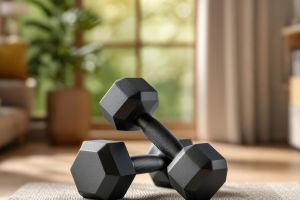Lykkers, the question of how to build stronger, more defined muscles has sparked debate for years: is it better to lift heavier loads for fewer reps, or lighter ones for more reps?
Research now shows that both methods can be effective—if the training is done with enough intensity.
The Basics of Muscle Growth
The importance of near-failure
To build muscle, it’s essential to push close to the limit of your strength during each set. This means lifting until only one or two repetitions could be performed before the movement becomes too difficult. It’s not just about how heavy the weight is, but how hard the muscles are working.
The science behind it
Studies from top exercise researchers, including those at McMaster University, have consistently shown that lifting lighter weights to near-failure can stimulate muscle development just as effectively as lifting heavier weights. The key is the effort, not the load.
How Training Methods Have Evolved?
Outdated training beliefs
Traditional advice once suggested different rep ranges for different goals: low reps for strength, mid-range for size, and high reps for endurance. This structure is still commonly used, but modern research suggests it’s not the only path to progress.
What current evidence says
Newer studies, which carefully control how close participants train to failure, reveal no significant difference in muscle gains between heavy low-rep training and lighter high-rep training—as long as both approaches are done with high intensity.
A practical middle ground
Using moderate rep ranges (6 to 15) with a challenging weight is still considered a great strategy. It balances intensity and duration, making it manageable yet effective. Sets can be completed in under a minute, offering both results and efficiency.
The Power of Progressive Overload
What progressive overload really means
Improvement in strength and muscle development comes from increasing the challenge over time—a principle known as progressive overload. This doesn’t always mean lifting heavier weights.
More reps, more gains
Progress can also come from increasing the number of reps, shortening rest times, or doing more sets that push muscles close to their limit. Each of these adjustments adds challenge and stimulates growth.
Focusing on one goal at a time
It’s unrealistic to expect improvements in all exercises at once. Advanced lifters often use “volume cycling,” a strategy that focuses on one muscle group at a time for a few months while maintaining others. This targeted approach helps ensure consistent progress.
What to Avoid
Don't waste effort on light sets
Training that’s too easy won’t produce meaningful results. This is called “junk volume”—reps and sets that don’t challenge the muscles enough to create adaptation. Many gym-goers fall into this trap without realizing it.
More exercises isn't always better
Doing too many different exercises can dilute the intensity of the workout. A focused routine with fewer movements, each done with real effort, is often more effective than spreading energy across too many lifts.
Light weights can still work—if pushed hard
Even lifting a small weight can lead to muscle growth if it’s done until the muscle is thoroughly fatigued. However, this usually takes longer and requires more reps, so time and consistency become even more important.
Final Thoughts
For Lykkers who are committed to building muscle or improving strength, the true key isn’t simply choosing between heavier weights or more reps. It’s about training with intensity and pushing close to the edge of what’s possible in each set.
Whether you prefer lighter loads or bigger lifts, progress comes from consistently challenging the body in smart, sustainable ways. Keep it focused, track your improvements, and avoid wasting effort on routines that don’t push you forward.


